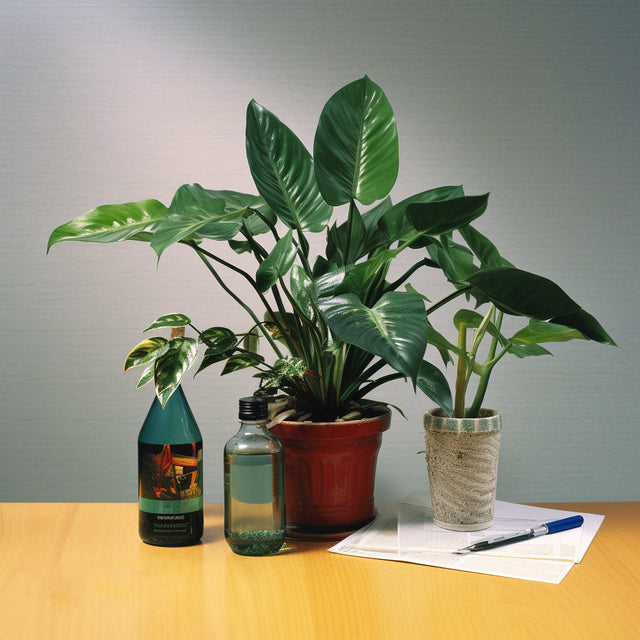Are you ready to dig into some dirt on potting soil? Whether you're a seasoned plant parent or just getting started, selecting the right potting soil is key for the health and growth of your indoor plants. But with so many options out there, it can be overwhelming to know where to begin. Don't worry, we've got you covered with some common questions and tips on what to look for when buying potting soil. So, let's get our hands dirty and find the perfect soil for your beloved indoor plants!
Can you use Garden Soil for Houseplants?
Garden soil is not the ideal choice for houseplants, as it may be heavy and compact, making it difficult for roots to receive the necessary air and water. Garden soil can also contain pathogens and pests that can harm indoor plants.
What to look for when buying potting soil?
Here are some key things to look for when buying potting soil:
- Drainage: Good potting soil should allow excess water to drain away, preventing waterlogging and root rot. Look for ingredients like perlite, sand, or vermiculite that promote good drainage.
- Aeration: The soil should also allow air to circulate, providing oxygen to the roots. Peat moss and coir are common ingredients that help improve aeration.
- Lightweight: Potting soil should be light and fluffy, making it easy for roots to grow and spread. Avoid soil blends that are too heavy or dense.
- Nutrients: Some potting soils contain added fertiliser for extra nutrition. If you choose one of these, make sure it is the right type of fertiliser for your plants.
- Organic matter: Organic matter like compost, worm castings, and composted bark provide nutrients and improve soil structure.
It may also be helpful to research the specific requirements of the plants you're growing to determine what type of potting soil will work best for them. There are a number of companies that have tailored soil for all types of plants. We would recommend Soil Ninja, a company that delivers high quality soil mixes.
With the right potting soil, your indoor plants will thrive and grow strong roots. So, take your time to find the right potting soil for your plants, and they will reward you with healthy growth.
Can you use peat moss for houseplants?
Peat moss is a common ingredient in potting soil because it helps retain moisture and improve aeration, making it easier for roots to breathe. It is also pH-neutral, which makes it suitable for a wide range of indoor plants.
However, peat moss is a non-renewable resource, and its extraction has significant negative environmental impacts, including the destruction of valuable peatland ecosystems and the release of stored carbon dioxide into the atmosphere. Due to these environmental concerns, the UK and EU are planning to ban the use of peat moss in the coming years.
Given the harmful environmental impact and upcoming regulations, we strongly recommend considering more sustainable alternatives.
Organic or non-organics soil for houseplants?
Organic and non-organic soil both have their pros and cons, and the choice between the two ultimately depends on personal preferences and the specific needs of your indoor plants. Organic soil is made from natural, organic materials like compost, worm castings, and composted bark. It is considered better for the environment as it supports sustainable agriculture and is free of synthetic fertilisers and pesticides. Organic soil supports a rich ecosystem of microorganisms including fungi and bacteria, that contributes to soil health, plant growth and disease resistance.
On the other hand, non-organic soil is often made from inorganic materials like perlite or vermiculite and may contain synthetic fertilisers. Non-organic soil provides reliable, consistent essential nutrition for indoor plants, making it a popular choice for those who want to ensure their plants receive the main necessary nutrients for growth.
Both organic and non-organic soil can provide good drainage and aeration for indoor plants, but the difference lies in the nutrients they provide. When choosing between the two, it's important to consider the specific needs of your indoor plants and your own values and preferences.
Overall, we recommend organic soil in most situations. Its environmental benefits, support for a healthy soil ecosystem, and sustainable nature make it a better choice robust plant growth and long-term soil health.
Practical Guide on checking if soil has enough nutrients.
- Start by observing your plant: Look for signs of nutrient deficiency, such as yellowing leaves, stunted growth, or wilting. These can indicate that your plant is not getting enough nutrients.
- Adjust the soil: If your soil is lacking in certain nutrients, you can adjust it by adding fertiliser or organic matter. Choose a fertiliser that is formulated for the specific needs of your plant, and follow the instructions carefully. Organic matter like compost or worm castings can also provide a natural source of nutrients for your plants.
💡Tip: Protect Your Soil’s Microorganisms
Using pesticides can kill the important microorganisms in your soil, such as fungi and bacteria, that contribute to soil health. Without these beneficial organisms, your plants can become more susceptible to disease. Consider using natural pest control methods to maintain a healthy and thriving soil ecosystem. We recommend Ladybird Plant Care, a great company that sells natural pest control methods.
Find similar articles:
Plant CareMore stories

Acclimatising your House plants : Changing their environment

